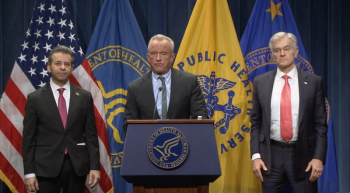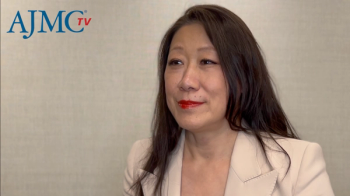In July 2021, the FDA approved an insulin glargine drug as not only a biosimilar but also the first “interchangeable,” meaning pharmacists could use their own discretion in dispensing this product to patients without having to seek provider authorization. It was then that things started to happen for this drug (Semglee), which had previously been available as an equivalent to Lantus, the reference product, but was not considered a biosimilar.
The biosimilar status, which was applied for by Biocon Biologics and Mylan, represented FDA certification that the insulin product was as safe and efficacious as Lantus and highly similar to this product. The interchangeability status represented a layer of convenience but also an added reassurance for patients and providers that this copy biologic had been subjected to an especially high layer of regulatory scrutiny.
To qualify for interchangeable status, a biologic must undergo a switching study to ensure that clinical outcomes are going to be the same even if patients switch back and forth between the reference product and the biosimilar multiple times.
Whether it is the biosimilar status, or the interchangeable designation, or—also likely—simply lower-price contracting, pharmacy benefit managers have started to embrace this product.
In October, Express Scripts announced that it was going put Semglee on its national preferred formulary starting in January 2022. Shortly thereafter, Prime Therapeutics announced that it, too, was going to give preference to use of this product.
The formulary decisions are not insignificant for the revenue-generating potential of Semglee. Prime Therapeutics has 33 million Blue Cross and Blue Shield plan members. As for why it was placing Semglee on its preferred list, Prime said it was sold on biosimilars after a pilot program involving the preference of granulocyte colony-stimulating factor (G-CSF) biosimilars and their reference products delivered savings of $4 million in 2019.
“If all Prime’s Blue Plan clients prefer biosimilars in the G-CSF space and adoption rates follow, we project savings of $41 million to $55 million a year,” Prime said in a statement.
Interchangeable biosimilars still represent an unknown quantity in the world of biologics. Biosimilars, per se, have been on the market since 2015, when a filgrastim product (Zarxio) was approved. The interchangeable designation is not meant to signify that an interchangeable biosimilar is better or more efficacious or safer, or in any way more reliable than a biosimilar, but such conclusions might be the unintended takeaway for providers and patients.
Unanswered Questions
On the other side of the coin, interchangeables have given rise to questions that haven’t been answered. What happens if the method of administration for the biosimilar or reference product changes, from prefilled syringe to wearable applicator, for example? Will the biosimilar still be considered interchangeable to the reference product? What if new indications are approved for the reference product? Is the biosimilar still going to be considered interchangeable for those indications?
In a presentation at the recent GRx+Biosims 2021 meeting of the Association for Accessible Medicines, Sarah Yim, MD, director of the Office of Therapeutic Biologics and Biosimilars at the FDA’s Center for Drug Evaluation and Research, explained that the FDA was working on clarifying the use of these agents by developing guidelines for product labeling and explaining how interchangeability applies to product containment and application devices.
Anshuman Patwardhan, PhD, MBA
A lot of emphasis is put on interchangeability and multiple switches; but even without interchangeability, there are ample data out there—real world data—where companies have switched from reference brand to biosimilar and have not seen any impact on efficacy, safety, or immunogenicity.
“We are also working on guidance for postapproval manufacturing changes for different reporting categories for interchangeables,” Yim said.
There are other aspects to the FDA’s effort to elucidate what it means for a biosimilar to be interchangeable, but to the listening public it may have seemed that interchangeability as a designation remains very much a work in progress.
At the same time, some in the product development industry are concerned that the more attention interchangeables receive, the less attractive biosimilars may appear to health care consumers and health care workers.
“In the case of chronic conditions, biosimilar manufacturers may have to do a switching study, but not for interchangeability. I think that kind of data doesn’t get talked about a lot,” said Anshuman Patwardhan, PhD, MBA, senior vice president, Global Licensing and Business Development–Biologics for Lupin Pharmaceuticals, who spoke at GRx+Biosims.
“A lot of emphasis is put on interchangeability and multiple switches; but even without interchangeability, there are ample data out there—real-world data—where companies have switched from reference brand to biosimilar and have not seen any impact on efficacy, safety, or immunogenicity,” he said.
More companies lately have sought interchangeable status for their biosimilars, and if in the past they have done so and have not been open about it, more recently they are eager to let the health consumer public and their investors know that they are seeking to distinguish their products this way.
Amgen and Pfizer Enter the Picture
This month, 2 major companies in the biosimilar space confirmed that they would seek interchangeable status for their adalimumab biosimilars: Pfizer (Abrilada) and Amgen (Amjevita). It is important to note that interchangeability for either of these biosimilars would represent a tweak on a preexisting product. Abrilada was approved as a biosimilar by the FDA in 2019, and Amjevita was approved in September 2016.
Neither product is able to come to market until 2023, owing to settlement agreements with the reference product company (AbbVie; Humira), but Pfizer and Amgen may be feeling a little pressure from what competitors are doing.
Another speaker at the GRx+Biosims conference was Anil Okay, chief commercial officer for Alvotech, which has developed AVTO2, a citrate-free, high-concentration form of adalimumab for which the company is seeking both biosimilar and interchangeable status in the United States.
He said his company is taking interchangeability very seriously.
“We believe we are the first company to have demonstrated bioequivalence of repeated switches between a proposed high-concentration adalimumab biosimilar and Humira,” Okay said. “We have seen recent reports that some competitors are just now trying to invest in interchangeability. It’s great. Alvotech made this decision very early.”















































